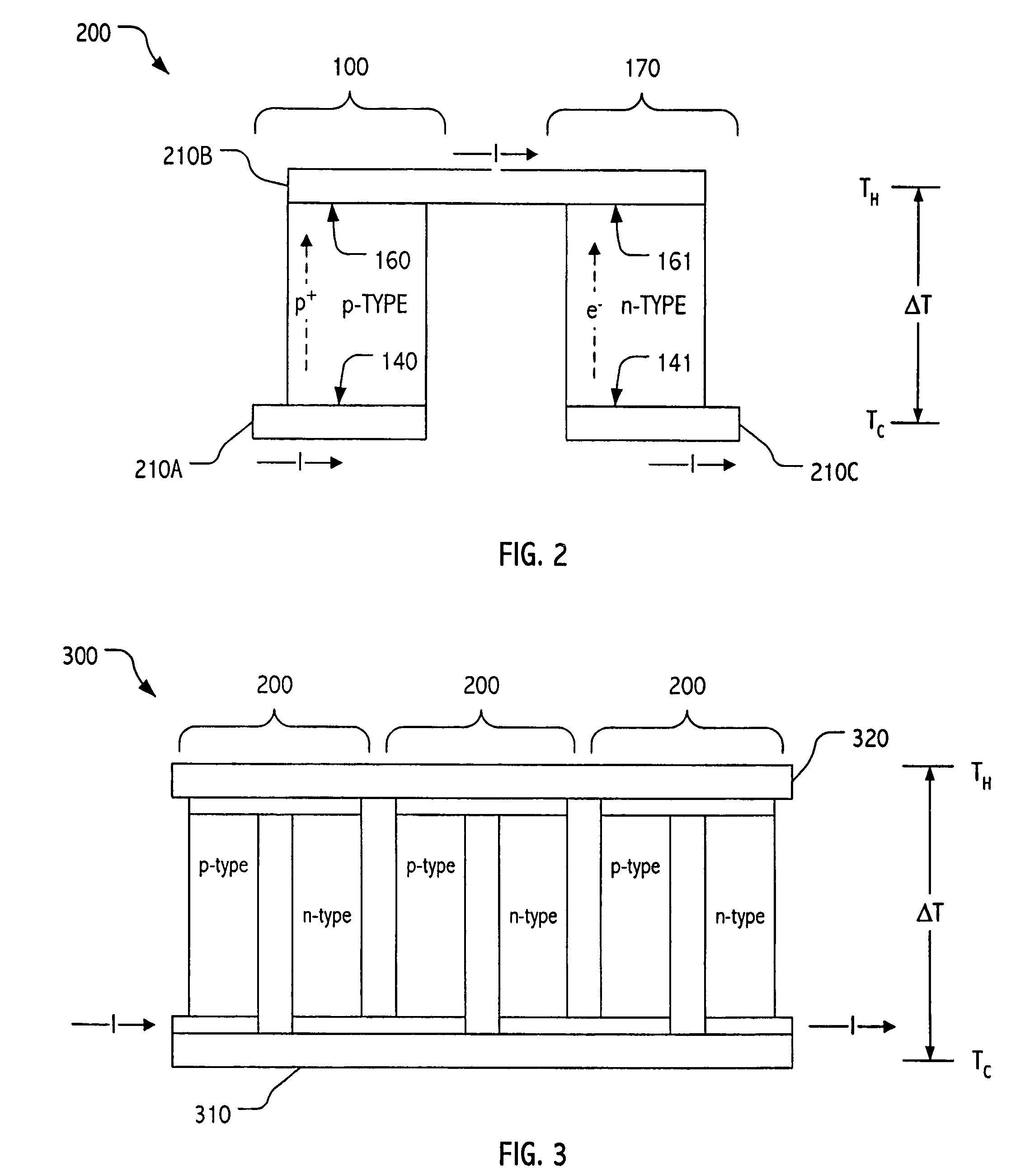System employing temporal integration of thermoelectric action
a technology of thermoelectric action and temporal integration, applied in the field of thermoelectric configuration, can solve the problems of affecting the performance of the device, malfunctioning or destroying the device, and electrical devices such as central processing units, can generate substantial heat during operation, and achieve the effect of high heat flux density devices
- Summary
- Abstract
- Description
- Claims
- Application Information
AI Technical Summary
Benefits of technology
Problems solved by technology
Method used
Image
Examples
Embodiment Construction
)
[0030]In the description that follows, we detail systems that employ thermoelectric modules (TEMs) in conjunction with one or more closed fluid cycle loops in which a forced flow of thermal transfer fluid (e.g., a liquid metal thermal transfer fluid) is used to transfer thermal energy to or from the thermoelectric modules. Systems are also described in which some fluid flows do not constitute a closed-cycle. In such systems, it can be advantageous to discontinuously flow the thermal transfer fluid into thermal contact with the hot or cold side of a thermoelectric module, allow it to dwell while heat is transferred from or to the thermoelectric module, and resume the flow. In configurations in which the thermoelectric module operation is itself discontinuous, various relationships between thermal transfer fluid flow and thermoelectric module operation can be advantageously employed to temporally integrate thermoelectric action.
[0031]In some thermoelectric systems it may be desirable...
PUM
 Login to View More
Login to View More Abstract
Description
Claims
Application Information
 Login to View More
Login to View More - R&D
- Intellectual Property
- Life Sciences
- Materials
- Tech Scout
- Unparalleled Data Quality
- Higher Quality Content
- 60% Fewer Hallucinations
Browse by: Latest US Patents, China's latest patents, Technical Efficacy Thesaurus, Application Domain, Technology Topic, Popular Technical Reports.
© 2025 PatSnap. All rights reserved.Legal|Privacy policy|Modern Slavery Act Transparency Statement|Sitemap|About US| Contact US: help@patsnap.com



